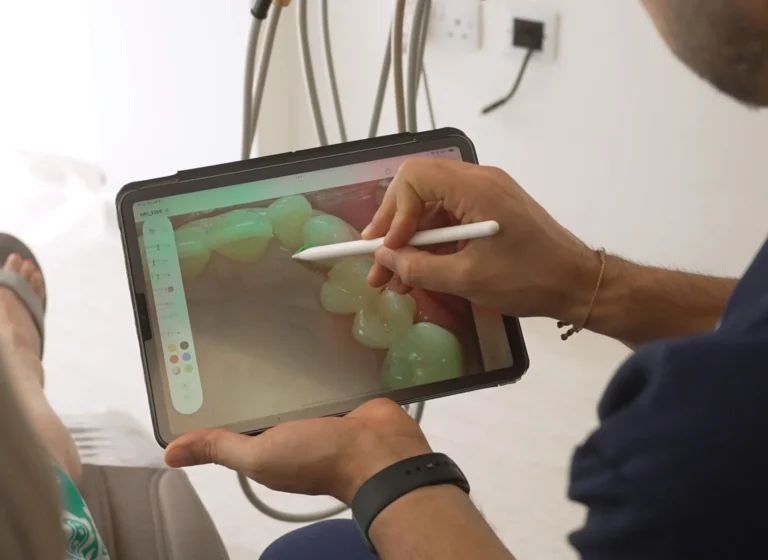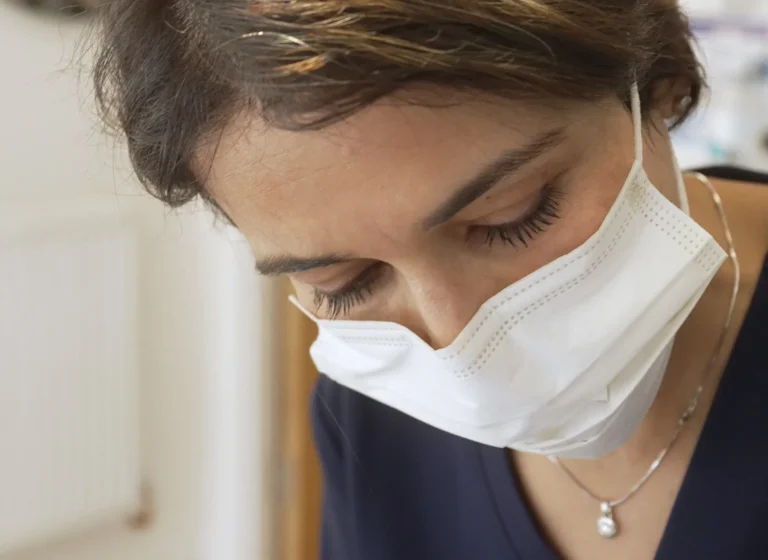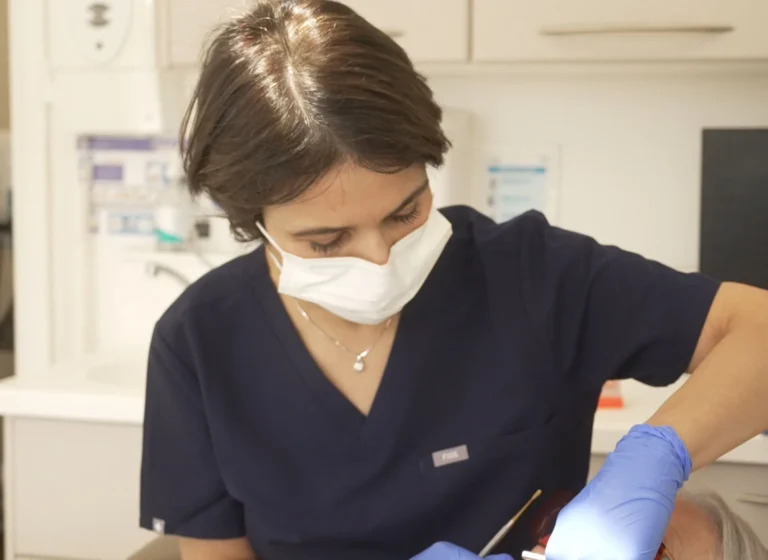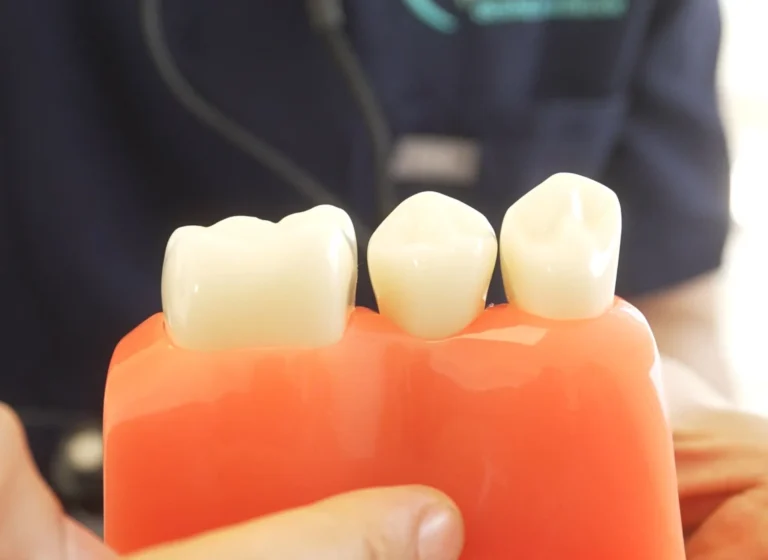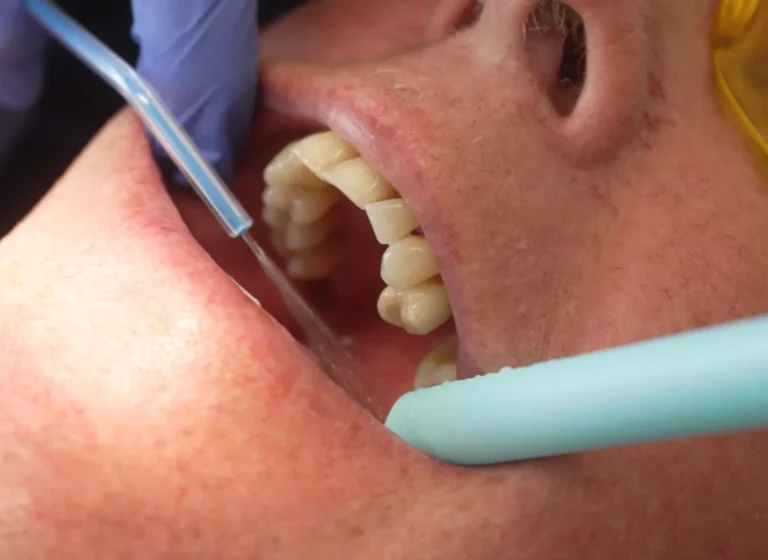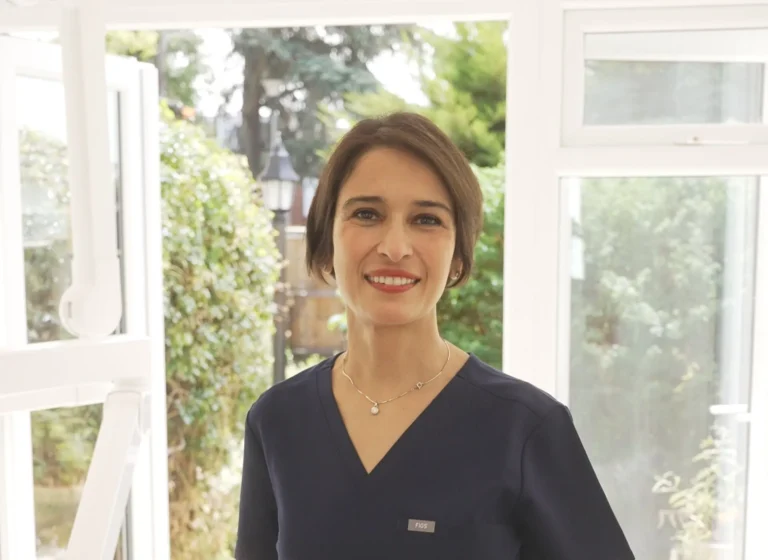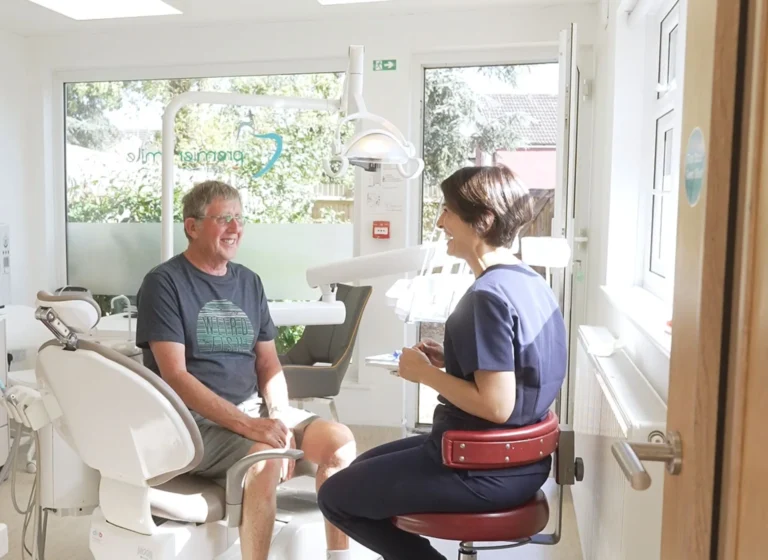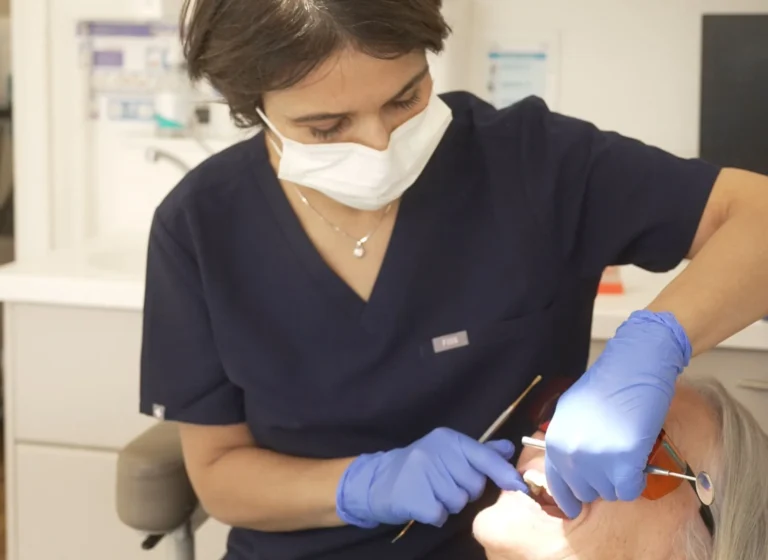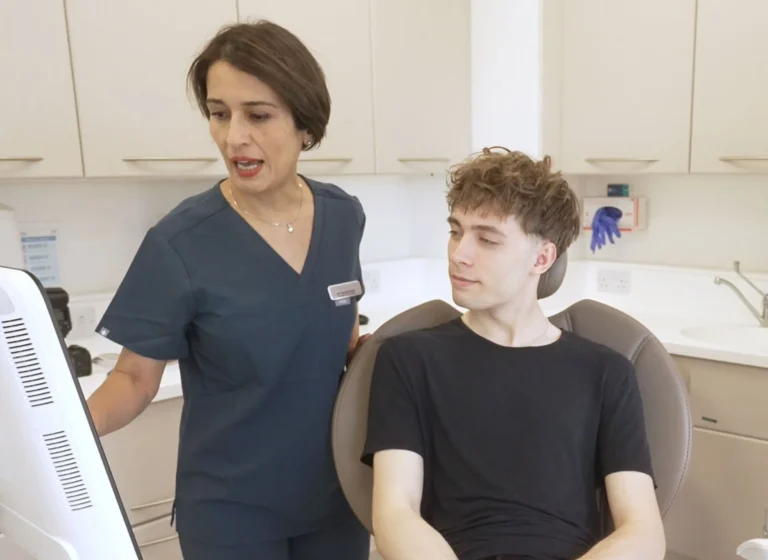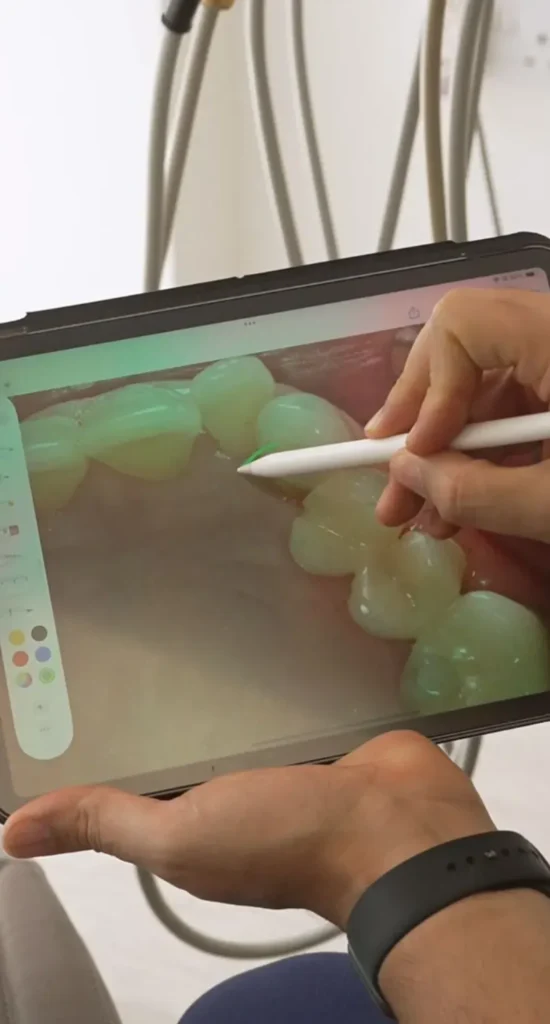How to Treat Gum Disease
Gum disease, also known as periodontal disease, is a common yet serious dental issue that can lead to tooth loss if left untreated. It starts as gingivitis, a mild form of gum disease, but if ignored, it can progress into more severe conditions. Many people wonder, “how to treat gum disease?” In this article, Dr Nooshin Vasfi will walk you through effective treatments, both professional and at-home, that can help manage and reverse gum disease in its early stages.
By the end of this guide, you’ll have a better understanding of gum disease, how to prevent it, and the best ways to treat it to maintain your oral health.
What Is Gum Disease and How Does It Develop?
Before diving into how to treat gum disease, it’s important to understand what it is and how it develops. Gum disease is primarily caused by the buildup of plaque—a sticky film of bacteria that forms on your teeth. If plaque is not removed through regular brushing and flossing, it can harden into tartar, leading to inflammation and infection in the gums.
Stages of Gum Disease:
- Gingivitis: The earliest stage, gingivitis causes redness, swelling, and irritation of the gums. It’s usually reversible with good oral hygiene.
- Periodontitis: If gingivitis is left untreated, it can progress to periodontitis. The infection can spread to the bone supporting the teeth, causing deeper pockets between the teeth and gums.
- Advanced Periodontitis: In the final stage, the structures supporting the teeth are severely damaged, leading to loose teeth and tooth loss.
Professional Treatments for Gum Disease
Treating gum disease often requires professional dental intervention. Dr Nooshin Vasfi offers several effective treatments depending on the severity of the disease.
1. Scaling and Root Planing
Scaling and root planing, also known as deep cleaning, is the most common treatment for gum disease in its early to moderate stages. Dr Nooshin Vasfi will use special tools to remove plaque and tartar from the surface of your teeth and beneath the gum line. Root planing smooths the roots of your teeth to help your gums reattach to them, preventing further infection.
- Duration: This treatment is usually done in two or more appointments, depending on the severity of the gum disease.
- Effectiveness: It’s highly effective for reversing gingivitis and can prevent periodontitis from progressing.
2. Antibiotics or Antiseptic Treatment
In some cases, Dr Nooshin Vasfi may recommend antibiotics or antiseptic treatments in conjunction with scaling and root planing to help reduce infection and inflammation. These can be in the form of topical gels, oral antibiotics, or even antibiotic-impregnated chips placed under the gum line.
3. Surgical Treatments
For advanced gum disease, surgical treatments may be required to restore gum health and prevent tooth loss. Procedures include:
- Flap Surgery: In this procedure, Dr Nooshin Vasfi will lift the gums to remove tartar and smooth the bone to allow for better gum reattachment.
- Bone Grafts: If the bone supporting the teeth is damaged, a bone graft may be necessary to encourage the regrowth of bone tissue.
- Soft Tissue Grafts: For gums that have receded significantly, soft tissue grafts may be used to restore lost gum tissue.
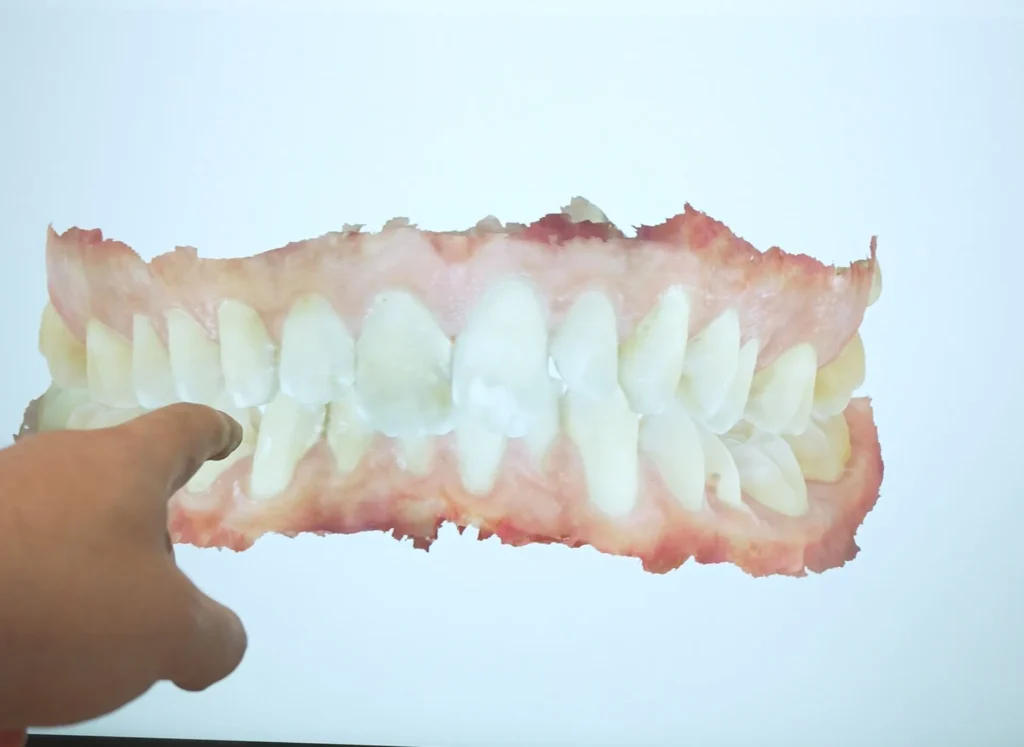
At-Home Treatments for Gum Disease
While professional treatments are crucial, maintaining good oral hygiene at home is the most important way to treat and prevent gum disease. Here are some effective at-home practices recommended by Dr Nooshin Vasfi:
1. Brushing Properly
Proper brushing is essential to removing plaque and preventing gum disease. Dr Nooshin Vasfi recommends brushing at least twice a day with fluoride toothpaste. Use a soft-bristled toothbrush and take your time—brushing for at least two minutes to ensure all areas of your mouth are thoroughly cleaned.
2. Flossing Daily
Flossing helps remove plaque and food particles between the teeth and under the gum line, where a toothbrush can’t reach. Dr Nooshin Vasfi advises flossing once a day, especially before bedtime, to prevent plaque buildup that can lead to gum disease.
3. Using an Antiseptic Mouthwash
An antiseptic mouthwash can help reduce plaque buildup and kill bacteria that cause gum disease. Dr Nooshin Vasfi may recommend using an over-the-counter or prescription mouthwash to complement brushing and flossing. Make sure to follow the instructions carefully to get the best results.
4. Maintaining a Healthy Diet
A balanced diet rich in vitamins and minerals, particularly vitamin C, is essential for gum health. Avoid sugary foods and drinks that promote plaque formation. Dr Nooshin Vasfi may also suggest that you reduce acidic and sticky foods to minimise plaque buildup.
How to Prevent Gum Disease
Preventing gum disease is much easier than treating it. Here are some preventive measures Dr Nooshin Vasfi recommends:
- Regular Dental Checkups: Visiting your dentist every six months for a routine cleaning and checkup is one of the best ways to catch gum disease early before it progresses.
- Quit Smoking: Smoking is a major risk factor for gum disease, so quitting can significantly reduce your chances of developing it.
- Proper Oral Hygiene: Stick to a consistent brushing and flossing routine, as this is the best defence against gum disease.
- Hydrate: Drinking plenty of water helps wash away food particles and bacteria, keeping your gums healthy.
When to See a Dentist for Gum Disease
If you notice any signs of gum disease, such as bleeding gums, persistent bad breath, or gum recession, it’s important to schedule a visit with Dr Nooshin Vasfi as soon as possible. Early intervention can help prevent the condition from worsening and avoid more invasive treatments later.
Conclusion: How to Treat Gum Disease
Gum disease is a serious condition that can lead to tooth loss if not treated properly. However, with professional treatment from Dr Nooshin Vasfi and consistent at-home care, you can effectively manage and even reverse the effects of gum disease in its early stages.
If you’re concerned about your gum health or are showing signs of gum disease, don’t wait. Book a consultation with Dr Nooshin Vasfi today. Dr Vasfi will assess your condition and provide personalised treatment options to help you achieve optimal gum health.
Contact me at info@nvendospecialist.co.uk to request more information today!
Or visit me at Premier Smile Dental Excellence in 34 Hockliffe St, Leighton Buzzard LU7 1HJ, UK.

